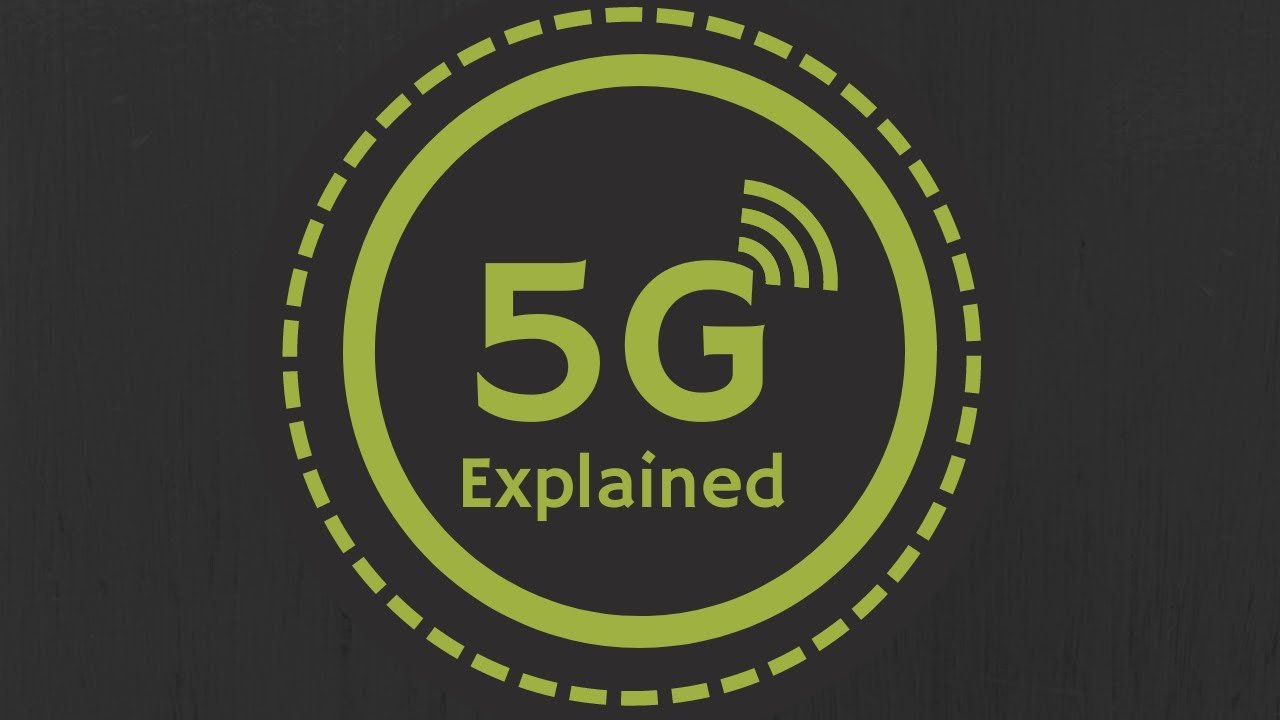In this video, 5G, The Fifth generation of mobile network technology is explained in detail.
By watching this video, you will learn the following things about 5G
0:00 What is 5G?
0:50 5G features and future applications/ services
3:30 5G frequency bands
5:30 How 5G works? Key technologies behind 5G
9:10 5G Deployment
What is 5G?
5G is the fifth generation of mobile network technology which provides unique features over the previous generations.
3 Key features (technical goals) of 5G:
1) Enhanced Mobile Broadband (High-Speed Internet)
2) Massive Machine to Machine type Communication
3) Ultra-Reliable and Low latency Communication
These three features will enable new applications and service areas like
1) Internet of Things (IoT)
2) Smart Home/ Smart Cities / Smart Agriculture
3) AR/VR based services
4) Cloud-based Gaming services
5) Autonomous vehicles (Self Driving Cars with very high reliability)
6) Smart Industries
5G frequency bands:
5G technology supports two frequency bands
FR1 : 410 MHz to 7125 MHz (sub 6GHz)
FR2: 24.25 GHz to 52.6 GHz ( mm-wave Band)
* mm-wave frequencies start from 30 GHz, but as 5G frequencies also cover beyond 30 GHz frequencies, it is commonly called as mm-wave band.
Key Technologies behind 5G
1) Massive MIMO
The 5G radios will support an array of antennas, which will increase the reliability, high throughput to end-user, and high spectral efficiency.
2) Network Slicing:
Network Function Virtualization (NFV) enables the network Slicing, where there will be multiple logical networks on top of the physical shared infrastructure.
Different types of services like IoT, low latency communication, high-speed internet can be served on these different logical networks.
Standalone and Non-Standalone 5G
Currently, there are two possible deployment options for 5G.
1) Non-Standalone 5G:
In this deployment, 5G New Radios (NR) will be used to serve High-Speed Data and Voice to users but for control and signaling 4G LTE architecture will be used.
With non-standalone 5G will enable the fast deployment of 5G as existing LTE infrastructure will be used for 5G deployment.
2) Standalone 5G:
In standalone 5G, NR as well the core architecture is 5G.
Standalone 5G will enable the true 5G experience for consumers.
This video will be helpful to everyone in understanding what is 5G and how 5G works?
#5G
#ALLABOUTELECTRONICS
————————————————————————————————–
Follow me on Youtube:
Follow me on Facebook:
Follow me on Instagram:
————————————————————————————————–
Music Credit:
source

Timestamps:
0:00 What is 5G?
0:50 5G features and future applications/ services
3:30 5G frequency bands
5:30 How 5G works? Key technologies behind 5G
9:10 5G Deployment
I like background music keep going even when lesson started
Spes
The Goddess Of Hope
In satellite communication we usually prefer uplink frequency greater than downlink frequency..but in 5g mobile technology y uplink less than downlink…can u explain this?
I am A UPSC aspirant ans struggling with science and tech core issues I can't express how much I am thankful to your beautiful way of explanation please bring some more informative videos ❤thanks a tonne
Great content!
Thanks for explaining why Huawei’s HarmonyOS will dominate the IOT era. And also the 6G era!
Is 5g penetrate through amber glass a inch away? Also… When you 5g phone screen is off ….is it still emitting high amount of 5g?
Frequency of what ?? What vibrates 6 Hz
Nice clear explaination made better with your simple but elegant graphics.
What these 700MHz 800Mhz 1800MHz 3300MHz ad 26GHz represents ? Can you please explain about it and difference with respect to other
Great explanation. Thank you for these useful videos
What about band 2, band 13….
Tip: Turn off sound and enable closed captioning.
At what frequency bandwidth do self assembling nano particles activate?
I am an engineer and this video is just a wonderful explanation!!
Sir aapke channel pe CRO ki video upload nahi hai kya?
Will we be able to change our 4G infrastructure by the time 6G comes?
Can u explain this 5G frequency does it affects the brain if we were to hold the handphone to our brains.
5G comes with FDD or TDD
Can you make a video on how well a world leader can control their machines all over the world, like in a war situation
Great lecture
Heard plinky plonk awful music from 2005. Downvoted, left.
Bro which course did u studied bro 😎
5g is not really safe
Numerous studies (2011-2017) report an increased risk of brain cancer due to the use of mobile phones Concern about other cancers: breast (male and female), testis, leukemia, thyroid and much more . current classification of radio frequencies as carcinogenic to humans (Class 2B) should be updated to carcinogenic to humans
Many claim that this is not true at all or that there is no evidence just to progress in the construction of radio transmitters!
And the 5 g accelerates all of this.
One piece of advice I would like to give you is to equip yourself with devices that protect against electromagnetic waves, such as Airestech products which in my opinion are among the best on the market
5g is part of progress, it is right to progress but why not protect yourself?